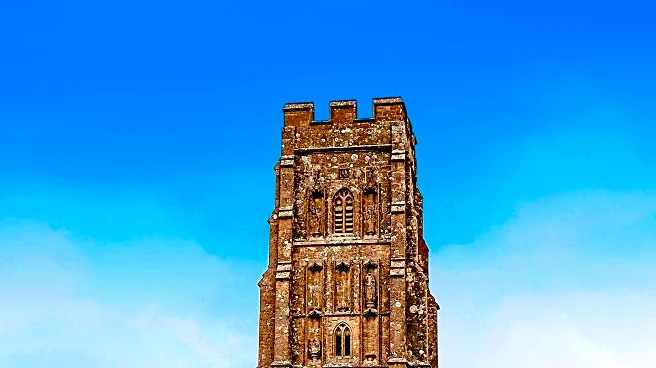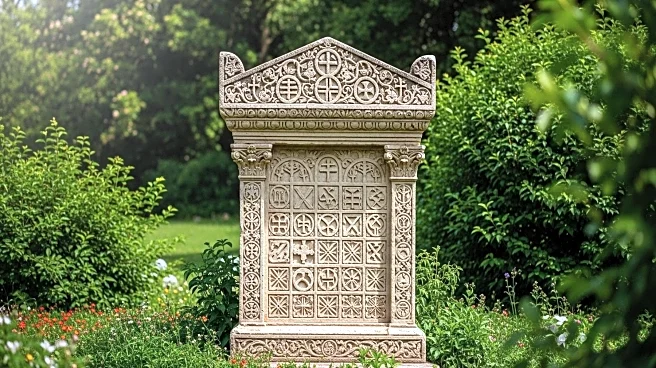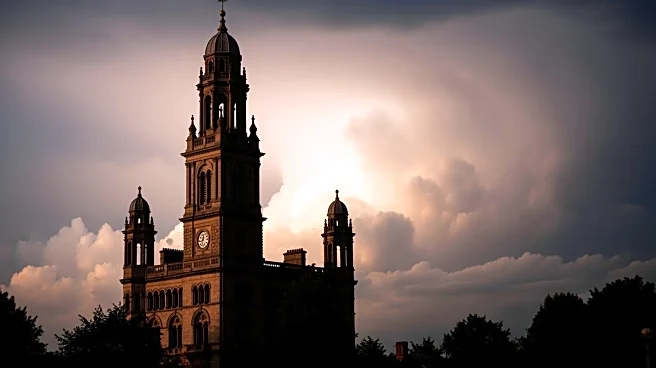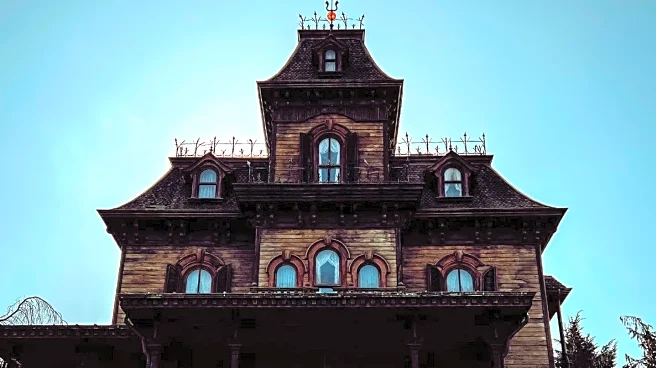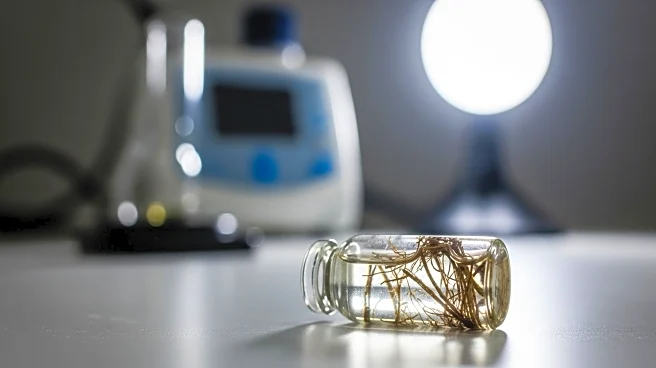What's Happening?
A project in Norwich has successfully recreated a fabric from a bishop's tomb, dating back nearly 550 years. The fabric, originally part of Bishop Walter Lyhert's ceremonial robe, was discovered in 1899 during building works at Norwich Cathedral. The fragments
have been preserved and studied, leading to the recreation of the sumptuous red and purple silk. The project involved collaboration between Norwich Castle Museum, Norwich Cathedral, and Gainsborough Silk Weaving, supported by the Costume and Textile Association. The recreated fabric is now displayed at Norwich Castle, alongside some original fragments.
Why It's Important?
The recreation of the bishop's tomb fabric is significant for historical preservation and cultural heritage. It provides insights into medieval textile craftsmanship and ecclesiastical attire, enriching the understanding of historical fashion and religious practices. The project also highlights the importance of interdisciplinary collaboration in heritage conservation, involving historians, textile experts, and scientists. This initiative not only preserves historical artifacts but also revitalizes interest in traditional textile arts, offering educational opportunities and cultural enrichment.
What's Next?
Norwich Cathedral plans to use the recreated fabric to make ceremonial cloaks for clergy, integrating historical elements into contemporary religious practices. This initiative aims to bring the recreated fabric back to its original setting, enhancing the cultural and historical experience for visitors and worshippers. The project may inspire further research and conservation efforts, encouraging similar initiatives to preserve and celebrate historical textiles and artifacts.
